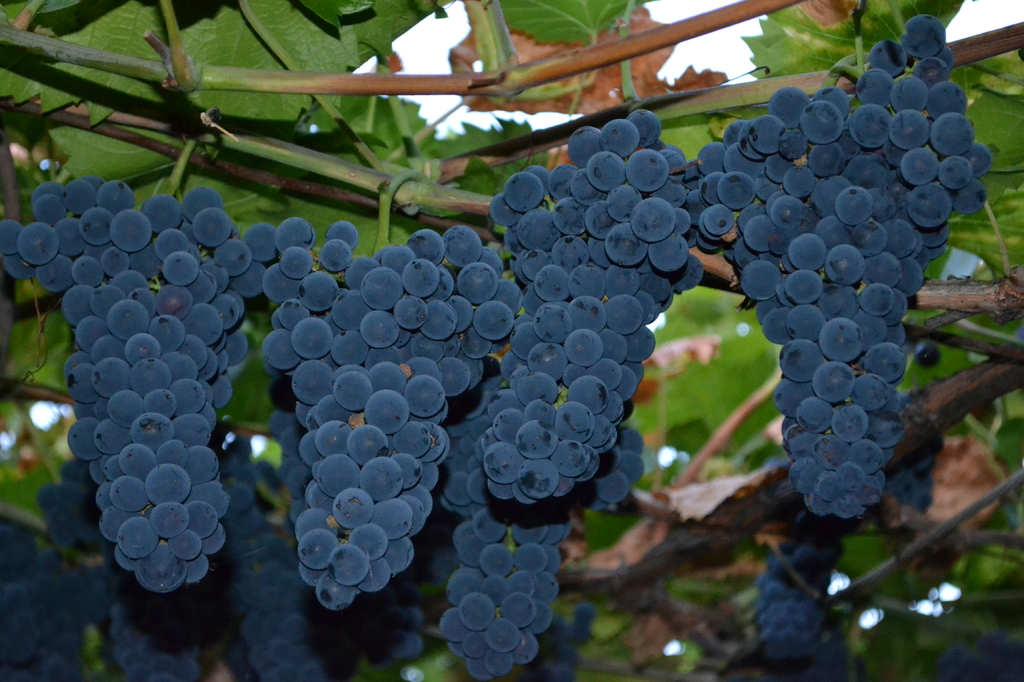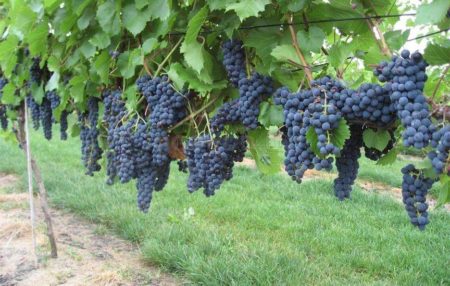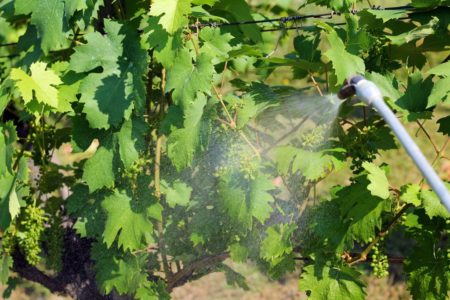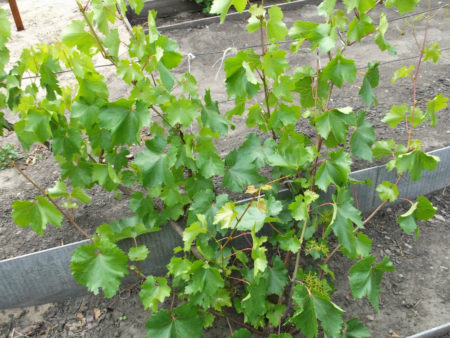
Wine grape varieties have long been grown by winemakers around the world, they are no less popular than table. One of the wonderful varieties of "Marquette", it is quite old, but cultivated in Russia not so long ago, so many do not know about its existence.
Content
Variety Characteristics

The birthplace of the Marquette variety is the USA, it was born through complex selection. Work on it was carried out at the University of Minnesota from 1989 to 1994. Thanks to its excellent qualities, the variety quickly gained popularity in Europe, and wines from it were appreciated by tasters. The variety was patented in 2005, you can buy seedlings only in nurseries.
“Marquette” refers to the technical grape varieties, ripening mid-season, the crop is harvested in September. With proper agricultural technology, up to 100 centners of grapes can be harvested from one hectare. Shoots grow vertically and almost do not need pruning and garter to the support. On one shoot, 2-3 clusters are mainly formed, they are massive and have a cylindrical shape, weighing from 200 to 400 grams. Unknowingly, “Marquette” can be confused with ordinary table grapes. The clusters are not densely located, often hidden behind large green foliage. The berries are small in size, rounded, painted in dark blue. The skin is covered with a waxy coating. Sugar content in fruits is from 25 to 28%, acidity is 2.9%. From the Marquette grapes, excellent red wine is obtained, in order to reduce acidity in it, malolactic fermentation is used.
The variety tolerates cold winters, withstands frosts down to -38 degrees Celsius. However, with the advent of spring, after the buds open, the grapes respond poorly to frost, even lowering the temperature to -2 degrees can be detrimental to the plant. He also does not tolerate cold rains, experienced agronomists advise in spring cover the vineyard with non-woven material.
Disease and Prevention

In general, the variety has excellent immunity. Fungal infections, such as oidium, mildew or black leg are rarely affected. However, sometimes phylloxera can be observed on plants. For protection, it is recommended that the vineyard be treated with fungicides in spring.
Advantages and disadvantages of the variety
Despite the popularity of Marquette in Europe, it has not only strengths, but also weaknesses. Learn about them better before planting grapes. After all, thanks to the right care crop losses can be minimized.
Advantages:
- excellent frost resistance;
- resistance to common fungal diseases;
- good yields;
- vertical growth of shoots, this allows you to spend a minimum of time on care;
- a high percentage of survival of seedlings;
Disadvantages:
- a sharp cooling in the spring and cold rains can destroy the plant;
- young seedlings can hardly tolerate bad weather conditions;
- You can purchase planting material only from licensed suppliers;
Landing
In order not to cause problems in the future, it is necessary to choose a sunny place, preferably on the south side of the garden or vegetable garden. For the Marquette variety, sandy or loamy soil is perfect.On other types of soils, grapes will also grow and bear fruit, but in this case it is recommended to lay drainage from small stones, expanded clay or broken bricks at the bottom of the planting pit. Particular attention should be paid to the location of groundwater, they should lie at least 250 cm deep. The choice of seedling also needs to be approached responsibly, it should not have signs of disease or any damage.
Grade Care

Young seedlings are a bit more difficult to care for than adult plants. After all, they are more susceptible to low temperatures and adverse conditions. Watering is carried out regularly as the soil dries. To do this, when planting, it is better to install pipes, through which water will flow directly to the roots of plants. It is necessary to loosen the top layer of the soil, in spring the soil is fertilized with liquid nitrogen-containing and phosphorus fertilizers.
The first few years, the young vine for the winter must be sheltered, as it is still vulnerable to cold. From 3-4 years of age shelter for the winter in the middle lane of the country basically not required. However, in the northern regions, where winter temperatures drop below -38 degrees, shelter will not hurt.
Adult plants need pruning, this procedure helps to ensure air circulation and maximum illumination. In August, the branches are pruned after 15 leaves, this contributes to the maturation of the grape brush. It is also necessary to remove shading clusters of leaves. Formative pruning is performed in the fall.
Reviews
Valeria
I like the Marquette variety, it is unpretentious in care, as I live in the south, even in the first years I did not harbor the vineyard. Minimum labor costs for trimming, I spend it 2-3 times per season. For 7 years my plants have never been sick, and did not cause any trouble. I treat pests and diseases once a year in the spring, after the movement of juices begins. My husband is engaged in wine making, to be honest, I’m not very versed in production. The wine is very tasty, fortified.
Pavel Ivanovich
The “Marquette” sapling was brought to me by my nephew from abroad, I was worried that I would not take root, because the path was not close, but it turned out to be in vain. I spend a few procedures for the care of the variety, pruning, watering, and treatment for diseases. I apply fertilizers every 2-3 years; I water it annually only with a solution of wood ash. The wine is amazing, while from Marquette he made dessert and fortified. Next year I want to make semisweet.
Conclusion
"Marquette" has already managed to win the recognition of consumers. It can be grown both in your garden and for commercial purposes. Labor costs are negligible. The variety is resistant to disease and rarely exposed to pests. The appearance of the grapes is unremarkable, and this is not surprising because it is cultivated exclusively for processing.




 Non-covering winter-hardy grape varieties for Moscow region
Non-covering winter-hardy grape varieties for Moscow region How to keep the vine in winter
How to keep the vine in winter When can I transfer grapes to another place in the fall
When can I transfer grapes to another place in the fall How to cover and prepare grapes for the winter in the suburbs
How to cover and prepare grapes for the winter in the suburbs